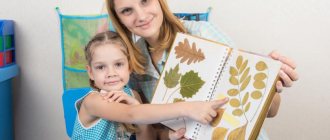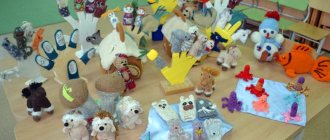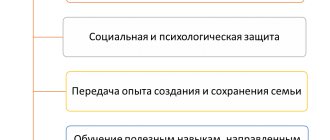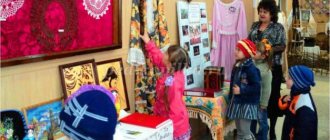Project “My Favorite Toy”
Project information card:
Project type: creative, group.
Project duration: short-term (2 weeks).
Project participants: children, teachers, parents.
Children's age: 2-3 years.
Relevance of the problem : The most important components of the educational environment are games and toys. Toys for a child are the “environment” that allows them to explore the world around them, develop and realize creative abilities, and express feelings; toys teach you to communicate and get to know yourself. Selecting toys is a serious and responsible matter. The child’s mood and progress in his development depend on the successful solution of this problem. Sometimes adults get upset, even angry at the child for not using the toys, not suspecting that he simply does not know how to play with all this. Toys themselves will not mean anything to a child if he does not know how and what to play with them.
Problem: At this age, children use many toys for other purposes and do not know how to play with them.
Project goal : to introduce children to the general concept of “toys”, to develop knowledge about the properties, qualities and functional purpose of toys.
Project objectives:
For children:
1. Introduce children to the concept of “toys” and expand their understanding of toys.
2. Arouse interest and desire to play with toys, use the toy for its intended purpose
3. Develop children's speech activity.
4. Teach how to include various toys in role-playing games.
5. Teach children to be more careful with toys.
6. Learn to play friendly, together, without quarreling.
For teachers:
1. Increase the teacher’s competence on this topic through the introduction of project activities.
2. Replenish the development environment for children’s independent activities.
For parents:
1. Give parents knowledge about the meaning of the toy, its role in the child’s play through mobile folders and information on the website.
2. Provide information about the appropriate pedagogical selection of toys.
3. Enrich parental experience with techniques of interaction and cooperation with the child in the family.
Main directions of project implementation:
- Social and moral development.
- Development of productive activities.
- Cognitive and research development.
- Introduction to fiction.
Project product: A selection of coloring books - toys, dominoes "toys", a card index of A. Barto's poems from the "Toys" series, clothes for dolls, the album "My Favorite Toy", replenishment of the subject-development environment with toys.
Name and form of the final event (event, holiday, etc.): Entertainment “Favorite Toys.”
Date of the final event: 4.04.2014.
Project implementation stages
| Stages | Events |
| I Preparatory (21.03) | Study and selection of material. Development of the project structure. |
| Preparation of thematic event planning | |
| Selection of didactic games | |
| Discussion with parents of children on issues related to the implementation of the project | |
| II Basic (from 24.03 – to 3.04.2014) | Conversations on the topics “Why are toys needed? ”, “My favorite toy”, “Such different toys”, “Toy store”, “What are toys made of?” |
| Exhibition of books "Toys". | |
| Carrying out d/games: “Find out by touch”, “One is many”, “Find by description”, “What has changed?”, “Find a toy of the same color”, “Wonderful bag”. | |
| Looking at illustrations of toys, looking at book illustrations. | |
| GCD for sculpting “Ball”. | |
| GCD for designing “Toy stand”. | |
| GCD for drawing “Gift for your favorite toy” | |
| Games with water (rubber toys, “Let's launch paper boats”). | |
| Learning poems by A. Barto from the “Toys” cycle. | |
| Learning the physical exercise “Wind-up toys.” | |
| Riddles about toys. | |
| Carrying out S/r. games “Bathing dolls”, “Toy store”. | |
| Walk. Choosing toys for a walk. | |
| CHHL. “In the toy store” from the book by Ch. Yancharsky (reading). | |
| Integrated lesson “Toys”. | |
| Folder – moving “Choosing a toy for children” (consultation for parents). | |
| III (4.04.2014) | Album “My Favorite Toys” |
| Entertainment "Favorite Toys". | |
| Preparation of reporting documentation: Project “My Favorite Toy”, information on the website. |
Comprehensively - thematic plan for project implementation
| date | Stage | Integration of educational areas | Joint activities of adults and children, taking into account the integration of educational areas. | Interaction with parents and social partners. | ||
| Group, subgroup | Individual | Educational activities in special moments | ||||
| 21.03 | I | Discussion with parents of children on issues related to the implementation of the project | ||||
| 24.03 | II | Social-communicative Cognitive Speech development | 1. Conversations on the topics “My favorite toy”, 2. D/i “Find out by touch.” | Learning poems by A. Barto from the “Toys” cycle. | Bring books on the topic “Toys” | |
| 25.03 | II | Cognitive Speech development | Looking at illustrations of toys, looking at book illustrations. | Exhibition of books on the theme “Toys”. | Learning at home poems by A. Barto from the “Toys” cycle. | |
| 26.03 | II | Artistic and aesthetic Speech development Physical | 1. Conversations on the topic “Why are toys needed? » 2. Drawing “Gift for your favorite toy” | Learning the physical exercise “Wind-up toys” | Consultation for parents “Choosing toys for children.” | |
| 27.03 | II | Cognitive Speech development | 1. Games with water (rubber toys), “Let’s launch paper boats.” | Riddles about toys | A selection of coloring pages - toys | |
| 28.03 | II | Social-communicative Cognitive Speech development | 1. Conversations on the topics “What are toys made of?” 2. Role-playing game “Toy Store”. | D/I “Wonderful bag” | ||
| 31.03 | II | Social-communicative Cognitive Speech development | 1. Choosing toys for a walk | D/I “One is many” | Sewing clothes for dolls | |
| 1.04 | II | Artistic and aesthetic Speech development | 1. Modeling “Ball” | D/I “What has changed?” | Learning poems by A. Barto from the “Toys” cycle. | Design of a card index of A. Barto’s poems from the “Toys” cycle |
| 2.04 | II | Artistic and aesthetic Speech development Cognitive | CHHL “In the toy store” from the book by Ch. Yancharsky | D/i “Find a toy of the same color” | Album design “My Favorite Toy”. | |
| 3.04 | II | Artistic and aesthetic Speech development Cognitive | Construction of the “Toy Stand” | D/I “Find by description” | Looking at the folder “My Favorite Toy” | |
| 4.04 | III | Entertainment “Favorite Toys” | Report for parents on the website | |||
Literature:
1. Complex classes according to the program “From birth to school”, ed. NOT. Veraksy, T.S. Komarova, M.A. Vasilyeva. First junior group / author comp. O.P. Vlasenko [and others]. – Volgograd: Teacher, 2011. – 292 p.
2. A. Barto. Toys.
3. Riddles for the development of speech, attention, memory and abstract thinking / comp. O.V. Uzorova, E.A. Nefedova. M.: AST: Astrel, 2005. – 222 p.
4. https://doshvozrast.ru/konspekt/komplex24.htm.
Pedagogical project “Toys” project (junior group) on the topic
Municipal budgetary preschool educational institution kindergarten No. 11 “Child Development Center” Konakovo
Pedagogical project
in the first junior group "Toys"
Type of project: Creative and gaming, short-term.
Project participants: Teachers, parents, children.
Relevance of the problem:
The reason for organizing and carrying out this project was that, confining themselves to televisions and computers, children began to communicate less with adults and peers, but communication greatly enriches the sensory sphere. Modern children have become less responsive to the feelings of others. Therefore, work aimed at developing the emotional sphere is very relevant and important. Play provides great opportunities for the development of a child’s emotional sphere.
At an early age, the basis for the development of a child’s personality is object-based play activity. Having passed it, it is impossible to count on the full maturation of a person.
Game is one of those types of activities that are used by adults to educate preschoolers, teach them various actions, methods and means of communication. In play, the child develops those aspects of his psyche that determine how much later he will succeed in his studies, work, and how his relationships with other people will develop; in the game, significant transformations occur in the intellectual sphere, which is the foundation of personal development.
The source of accumulation of sensory experience at an early age is a toy, since it is to a toy that a child transfers all his human feelings.
It is necessary to take care of toys so that the child can organize play.
A toy is not just fun. Giving toys was a common custom - a gift brings health and well-being to the child. But we began to notice that children throw toys, snatch them from each other, and do not see that the toys are lying around. And so it was decided to create a toy book based on the work of A. Barto. It is important to develop in your child the habit of taking care of toys, folding them carefully, and putting them away after playing. It is advisable to teach him to share toys when playing with peers, to give toys that he himself has made to other children. Let the child feel the joy of giving pleasure to another.
At every age, a child needs toys with different themes and purposes: story toys (dolls, animal figurines, furniture, dishes); technical (transport, designers, technical units); toys - “tools of labor” (scoop, hammer, screwdriver, sweeping brush, rake toys with a shovel - in a word, toys that imitate the simplest means of adult labor); toys - fun; theatrical, musical, sports toys for children of all ages. Large toys that the child plays with not on a table, not on a carpet or sofa, but on a spacious area of the yard or in a large playroom (scooters, children's pedal cars, tractors, large easily transformable structures for construction in the yard help combat physical inactivity, teach the child movements and orientation in space.
Selecting toys is a serious and responsible matter. The child’s mood and progress in his development depend on the successful solution of this problem. Sometimes adults get upset, even angry at the child for not using the toys, not suspecting that he simply does not know how to play with all this. Toys themselves will not mean anything to a child if he does not know how and what to play with them.
Therefore, I consider this project timely at this stage.
Problem: At this age, children use many toys for other purposes and do not know how to play with them.
Goal: Formation of social and moral qualities in children through the organization of various types of activities: gaming, cognitive, productive. Children's mastery of play actions that reflect life situations known to them.
Tasks:
For children:
1. Introduce children to the concept of “toys” and expand their understanding of toys.
2. Arouse interest and desire to play with toys, use the toy for its intended purpose
3. Develop children's speech activity.
4. Teach how to include various toys in games.
5. Teach children to be more careful with toys.
6. Learn to play friendly, together, without quarreling.
For teachers:
1. Increase competence on this topic through the implementation of project activities.
2. Replenish the development environment for children’s independent activities.
For parents:
1. Give parents knowledge about the meaning of the toy, its role in the child’s play through mobile folders and information on the website.
2. Provide information about the appropriate pedagogical selection of toys.
3. Enrich parental experience with techniques of interaction and cooperation with the child in the family.
Main directions of project implementation:
- Social and moral development.
- Development of productive activities.
- Cognitive and research development.
- Introduction to fiction.
Addressing: Enriching children's knowledge about toys and their purpose. Activation of the dictionary.
Project development:
Selection of material aimed at 2-3 years
Development of cognitive activities (conversations, design of children's works, paintings, viewing illustrations)
Planning game activities.
Interaction with family.
Name and form of the final event:
Entertainment “Favorite Toys”, album “My Favorite Toy”
Expected result:
- mastering the concept of “toy”; understanding of play areas in a group; - showing interest in experimenting with various toys; — mastering knowledge about the properties, qualities and functional purpose of toys; - careful handling of toys; — the speech activity of children in various types of activities is activated; — involvement of parents in the pedagogical process of preschool educational institutions; — assistance in forming the correct attitude of parents towards the development of their child.
Project implementation
| Stages | Events |
| I Preparatory | Study and selection of material. Development of the project structure. |
| Preparation of thematic event planning | |
| Selection of didactic games | |
| Discussion with parents of children on issues related to the implementation of the project | |
| II Basic | Conversations on the topics “Why are toys needed? ”, “My favorite toy”, “Such different toys”, “Toy store”, “What are toys made of?” |
| Exhibition of books "Toys". | |
| Conducting didactic games: “Find out by touch”, “One is many”, “Find by description”, “What has changed?”, “Find a toy of the same color”, “Wonderful bag”, “Guess what sounds.” | |
| Looking at illustrations of toys, looking at book illustrations. | |
| GCD for sculpting “Ball for Katya’s doll.” | |
| GCD for the Tumbler applique. | |
| GCD for drawing “Matryoshka”, “Teddy bear”. | |
| Games with water (rubber toys, “Fishing”). | |
| Consolidation of poems by A. Barto from the “Toys” cycle. | |
| Learning physical exercises “Toys”. | |
| Riddles about toys. | |
| Conducting a role-playing game “Family”, “Toy Store”. | |
| Walk “Choosing toys for a walk” | |
| Integrated continuous direct educational activity “What kinds of toys are there?” | |
| Folder – movement “Toys in a child’s life” (consultation for parents). | |
| III Final | Mini-museum “My Favorite Toy” |
| Photo exhibition “My favorite toy” | |
| Entertainment "Favorite Toys". | |
| Preparation of reporting documentation: Project “My Favorite Toy”, information on the kindergarten website. |
| Stage | Integration of educational areas | Joint activities of adults and children, taking into account the integration of educational areas. | Interaction with parents and social partners. | ||
| Group, subgroup | Individual | Educational activities in special moments | |||
| I | Discussion with parents of children on issues related to the implementation of the project | ||||
| II | Social-communicative Cognitive Speech development | 1. Conversations on the topics “My favorite toy”, 2. D/i “Find out by touch.” | Learning poems by A. Barto from the “Toys” cycle. | Bring books on the topic “Toys” | |
| II | Cognitive Speech development | Looking at illustrations of toys, looking at book illustrations. | Exhibition of books on the theme “Toys”. | Learning at home poems by A. Barto from the “Toys” cycle. | |
| II | Artistic and aesthetic Speech development Physical | 1. Conversations on the topic “Why are toys needed? » 2. Drawing “Gift for your favorite toy” | Learning the physical exercise “Wind-up toys” | Consultation for parents “Choosing toys for children.” | |
| II | Cognitive Speech development | 1. Games with water (rubber toys), “Let’s launch paper boats.” | Riddles about toys | A selection of coloring pages - toys | |
| II | Social-communicative Cognitive Speech development | 1. Conversations on the topics “What are toys made of?” 2. Role-playing game “Toy Store”. | D/I “Wonderful bag” | ||
| II | Social-communicative Cognitive Speech development | 1. Choosing toys for a walk | D/I “One is many” | Sewing clothes for dolls | |
| II | Artistic and aesthetic Speech development | 1. Modeling “Ball” | Didactic game “What has changed?” | Learning poems by A. Barto from the “Toys” cycle. | Design of a card index of A. Barto’s poems from the “Toys” cycle |
| II | Artistic and aesthetic Speech development Cognitive | Reading “In the Toy Store” from the book by Ch. Yancharsky | Didactic game “Find a toy of the same color” | Album design “My Favorite Toy”. | |
| II | Artistic and aesthetic Speech development Cognitive | Construction of the “Toy Stand” | D/I “Find by description” | Looking at the folder “My Favorite Toy” | |
| III | Entertainment “Favorite Toys” | Report for parents on the website | |||
Conclusion
Analyzing the work done, we can draw the following conclusions:
- the topic of the developed project was chosen taking into account the age characteristics of young children and the amount of information that can be perceived by them, which had a positive impact on various types of their activities (game, cognitive, communicative, productive, musical and gaming);
- There was a positive emotional response from children to their introduction to toys (children showed interest and desire to play with them);
- Children’s speech activity increased, which had a positive effect on children’s independent play activities (children include various toys in the plot of the game and try to carry out role-playing dialogue).
Literature:
- Doronova T.N., Program “From childhood to adolescence” (from 1 year to 4 years).
- Riddles for the development of speech, attention, memory and abstract thinking / comp. O.V. Uzorova, E.A. Nefedova. M.: AST: Astrel, 2005. – 222 p.
- “Preschool education” No. 2, 4 - 2005.
- “Tryntsy - bryntsy, bells” - (Russian folk nursery rhymes, jokes, chants, lullabies, teasers, counting rhymes). Moscow, Children's Literature Publishing House, 1994.
- “The cockerel crowed” (Russian folk songs, nursery rhymes, fairy tales). Moscow, publishing house “Malysh”, 1996.
- A. Barto. Toys.
Developed by the teacher of MBDOU kindergarten No. 11 “Tsrr” in Konakovo
Maksakova Elena Vladimirovna Page






